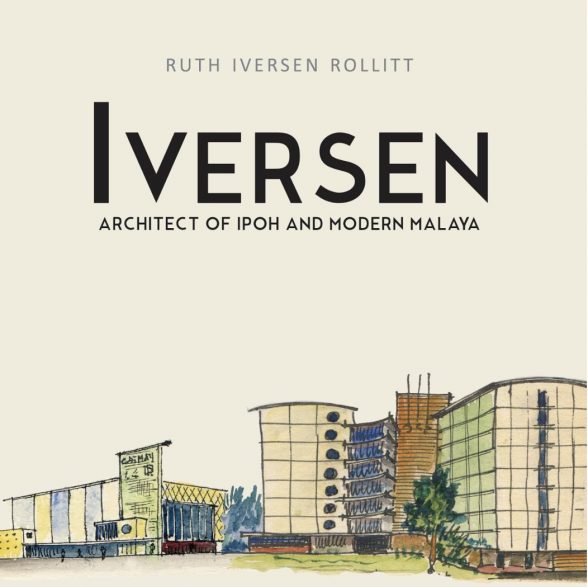This website uses cookies
This website uses cookies to enable it to function properly and to analyse how the website is used. Please click 'Close' to accept and continue using the website.


Iversen: Architect of Ipoh and Modern Malaya
Ruth Iversen Rollitt (Areca Books, 240pp, £37.50) (RIBA bookshop)
Reviewed by Ian McInnes

Published by a Malaysian firm in Penang, this is a welcome addition to the history of C20 architecture in South East Asia. Good as many of the buildings are, it is the story behind them, the nitty-gritty of architectural practice in another country, which is in many ways more fascinating. The author is the architect’s daughter, and she has had access to his diaries as well as a comprehensive archive of plans, photographs and colourful conceptual sketches.
Berthal Michael Iversen (1906-76) was a Dane who went out to Malaya to join his elder brother, who worked as a planter there. After a brief visit, he went on to Singapore and, through an introduction from a friendly Danish engineer, secured a job with local firm Booty and Edwards. After two years he moved on to the more prestigious firm of Keys and Dowdswell, and from 1931 to 1934 was their resident manager in Ipoh in the northern part of Malaya, even then quite a large city. As frequently happens, once he had made enough local contacts he was off on his own.
The range of buildings he designed and built is quite astonishing to modern eyes. In the five years from 1934 to 1940 he produced a considerable number of shops, office buildings, cinemas and houses. He was clearly well regarded by the local Malayan community and most of his work was for them – Malaya was a protectorate, not a colony, so there were not many British settler clients. He managed to leave the country with his family just before the Japanese invasion in 1941, returning in 1945 after four years in Australia. He retired in 1966, and the practice continued under locally-born partners.
The book is copiously illustrated and shows the gradual change in his style from the more traditional Scandinavian type houses with steep roofs – not inappropriate in a country where rainfall is high – to Art Deco (for the cinemas) and (after the Second World War) mainstream tropical modernism for both houses and commercial buildings.
By pre-independence Malayan standards, it was a large practice. He took on additional partners and there were offices in Kuala Lumpur and Penang as well as Ipoh, and – for a short time – in Singapore. His best-known building in KL is Federal House, a 1954 competition-winning scheme for the local savings bank. Ken Yeang, the well-known contemporary Malaysian architect, was brought up in a house Iversen designed for his father in the early 50s.
A short preface and epilogue by two local architectural historians put Iversen’s work in context and confirm that he was both influential and held in high regard by other local architects. This period of architecture has succumbed to considerable development pressures in Malaysia, as elsewhere in the region, and the book gives a fascinating glimpse of a world that no longer exists: when architecture was done very differently, but with great effect.
We are still populating our book review section. You will be able to search by book name, author or date of publication.

Become a C20 member today and help save our modern design heritage.